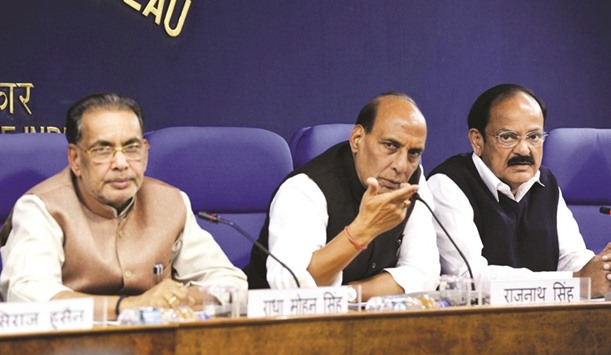India’s cabinet has cleared the launch of the country’s first major crop damage insurance scheme from the next fiscal year, a move that would further strain government finances but help Prime Minister Narendra Modi to woo rural voters ahead of key elections.
Stung by criticism of ignoring the concerns of rural India where over two-thirds of the country’s 1.25bn people live, the government yesterday fielded as many as three cabinet ministers to underline the importance of the Pradhan Mantri Fasal Beema Yojna whose budget will more than double in three years.
Modi is trying to placate rural voters after the impact of unseasonal rains and two straight years of drought on agriculture dented his popularity and contributed to a humiliating loss for the ruling Bharatiya Janata Party in elections late last year in the largely rural state of Bihar.
Further elections are due in the states of West Bengal, Kerala, Tamil Nadu and Assam this year.
“It is a historic day,” Modi tweeted after the scheme was announced by the ministers of agriculture, home and parliamentary affairs. “I believe the prime minister’s crop insurance scheme, inspired by the well-being of farmers, will bring about a huge change in the lives of farmers.”
Several debt-laden farmers committed suicide last year, and Agriculture Minister Radha Mohan Singh has said that delays in clearing payouts for crop losses were the “biggest reason for destroying farm families”.
The government would now ensure faster settlements by increasing the use of technology, including smartphones to capture crop data. It would also reduce premiums to be paid by farmers to 2% for summer-sown crops and 1.5% for winter crops.
The current premium share for farmers can go as high as 40%, which is one of the main reasons that only about a tenth of India’s estimated 263mn cultivators opt for crop insurance.
Home Minister Rajnath Singh said “the scheme will create a security shield for farmers and will provide financial relief to them.”
Crop insurance schemes have been around since 2008, but they have registered a mere 23% cover. The aim is to increase it to 50% cover in the next few years.
“Farmers didn’t accept the scheme because of deficiencies. The government has now removed those,” Singh added.
“So far, a government will only provide relief, but now the scheme will compensate for the losses,” the agriculture minister said.
Going beyond the conventional methods of compensation and crop cover, the scheme provides for compensation for even loss of seed plants and post-harvest damage. It will also provide assessment for localised calamities - including hailstorms, unseasonal rains, landslides and inundation - addressing a long-standing demand of farmers.
Urban Development Minister M Venkaiah Naidu said: “Because of area-based assessments - in which the results of crop cutting experiments over a small area are used to pay claims for a larger area - farm-level assessment is not done at all. Once farm-level assessments begin, claims for losses suffered in localised calamities will get paid.”
New Delhi will more than double the budget for the crop insurance scheme to Rs77.50bn ($1.16bn) in the fiscal year beginning April 2018.

Home Minister Rajnath Singh (centre) speaks at a press conference as Urban Development Minister M Venkaiah Naidu (right) and the Agriculture Minister Radha Mohan Singh look on in New Delhi yesterday.


